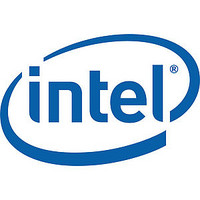lxt362 Intel Corporation, lxt362 Datasheet - Page 16

lxt362
Manufacturer Part Number
lxt362
Description
Integrated T1 Lh/sh Transceiver For Ds1/dsx-1 Or Pri Applications
Manufacturer
Intel Corporation
Datasheet
1.LXT362.pdf
(48 pages)
Available stocks
Company
Part Number
Manufacturer
Quantity
Price
Company:
Part Number:
lxt362PE
Manufacturer:
INTEL
Quantity:
1 831
Part Number:
lxt362PE
Manufacturer:
LXT
Quantity:
20 000
LXT362 — Integrated T1 LH/SH Transceiver for DS1/DSX-1 or PRI Applications
2.3
2.3.1
2.3.2
2.3.3
2.3.4
2.4
16
Receiver
A 1:1 transformer provides the interface to the twisted-pair line (RTIP/RING). Recovered data is
output at RPOS/RNEG (RDATA in Unipolar mode), and the recovered clock is output at RCLK.
Refer to
Receive Equalizer
The receive equalizer processes the signal received at RTIP and RRING. The equalizer gain is up
36 dB. As shown in
maximum gain applied to the equalizer. In Host mode, EC1 through 4 are established by bits 0
through 3 of Control Register #1 (CR1), respectively. In Hardware mode, pins EC1, EC2, EC3, and
EC4 specify equalizer gain setting. With EC1 Low, up to 36 dB of gain may be applied. When EC1
is High, 26 dB is the gain limit to provide an increased noise margin in shorter loop operations.
Receive Data Recovery
The transceiver filters the equalized signal and applies it to the peak detector and data slicers. The
peak detector samples the inputs and determines the maximum value of the received signal. The
data slicers are set at 50% of the peak value to ensure optimum signal-to-noise performance.
After processing through the data slicers, the received signal goes to the data and timing recovery
section, then to the B8ZS decoder (if selected) and to the receive monitor. The data and timing
recovery circuits provide input jitter tolerance significantly better than required by AT&T
Pub 62411. See
Receive Digital Data Interface
Recovered data is routed to the Loss of Signal (LOS) Monitor. In Host mode, it also goes through
the Alarm Indication Signal (AIS, Blue Alarm) Monitor. The jitter attenuator (JA) may be enabled
or disabled in the receive data path or the transmit path. Received data can be routed to the B8ZS
decoder or bypassed. Finally, the device may send the digital data to the framer as either unipolar
or bipolar data.
Receiver Monitor Mode
The receive equalizer can be used in Monitor mode applications. Monitor mode applications
require 20 dB to 30 dB resistive attenuation of the signal, plus a small amount of cable attenuation
(less than 6 dB). In Host mode, setting bit CR3.EQZMON = 1 configures the device to operate in
Monitor mode. Note that the LXT362 must be in long-haul receiver mode (set bits
CR1.EC4:1 = 0xx0, 1001, or 1010) to enable Monitor mode. Note that the Monitor mode feature is
not available in Hardware mode.
Jitter Attenuation
A Jitter Attenuation Loop (JAL) with an Elastic Store (ES) provides the jitter attenuation function.
The JAL requires no special circuitry, such as an external quartz crystal or high-frequency clock
(higher than the line rate). Rather, its timing reference is MCLK.
Table 27 on page 41
“Test Specifications” on page 38
Table
10, Equalizer Control inputs (EC1 through EC4) determine the
for receiver timing specifications.
for details.
Datasheet












